Opening 1902 Parking 200 Number of rooms 50 | Owner Hotel Controls Pvt Ltd Opened 1902 Number of restaurants 2 | |
Location The Mall, Mussoorie
Uttarakhand, India Similar Thread Garden, Government Rose Garden, Emerald Lake - Ooty, Avalanche Lake - Ooty, Pykara | ||
The Savoy, is a historic luxury hotel located in the hill station, Mussoorie, in Uttarakhand state of India, owned by Hotel Controls Pvt Ltd ITC Welcomgroup Hotels. Established in 1902, built in English Gothic architecture style mostly in wood, the hotel is spread over 11 acres (45,000 m2) with 50 rooms at present, and overlooks the Himalayas. After the railway reached Dehradun in 1900, Mussoorie became more popular, and was the chief summer resort for European residents of the British Raj, from the plains of the United Provinces. Its bar, known as the 'Writer's Bar' remained famous for many decades after the independence of India in 1947.
Contents
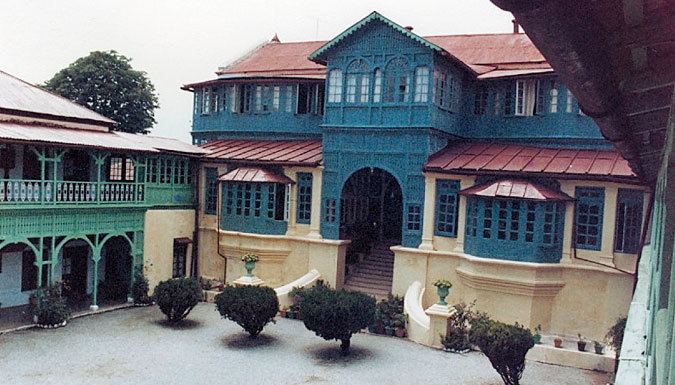
At its height during the British Raj, according to a recent reviewer, "when the town itself was known as "the pleasure capital of the Raj", the Savoy Hotel was the place either to stay (if you could afford it) or to be seen (if you couldn't)".
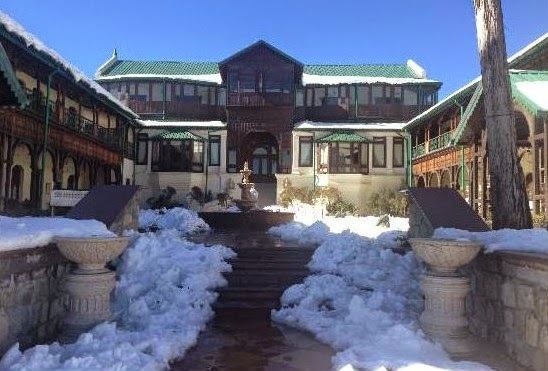
Although the hotel gradually fell into disrepair and dwindling fortune after the 1960s, as newer hotel started flourishing in the town, and there were fewer Raj nostalgia travellers, it saw its fortunes revived after 2000 and it was bought by the ITC Welcomegroup in 2009.
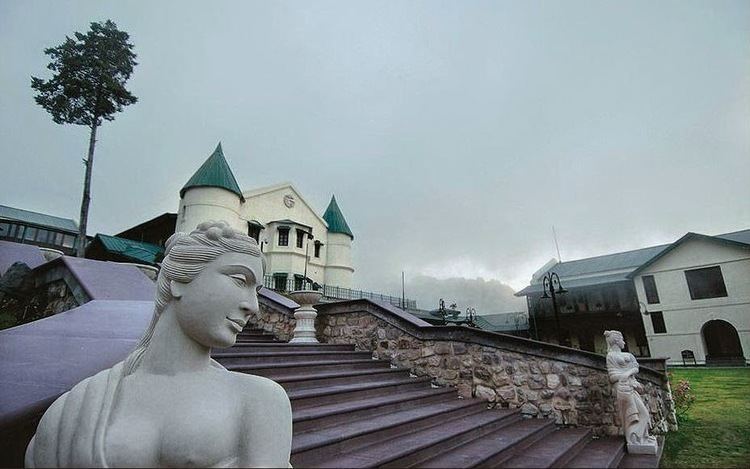
History
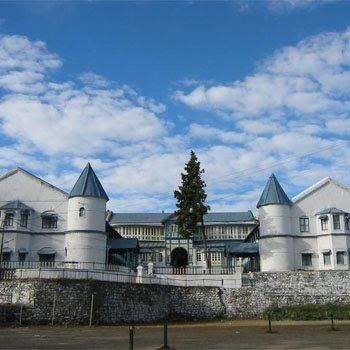
The first hotel to be opened in Mussoorie was built in 1838. (Fanny Eden, sister of the Governor-General Lord Auckland, wrote in her journal of March 17th 1838 "There is a large hotel just built on a hill here, and slate billiard tables in it. It is impossible in this book to attempt a sketch of the mountains but if you were to see where we are and upon what we are looking down, you would wonder how hotels and slate billiard tables get here. All the materials for building them are brought from the plain." From Tigers, Durbars and Kings; Fanny Eden's Indian Journals transcribed and edited by Janet Dunbar, John Murray, London 1988). The "Charles Ville" hotel was built in 1861. Cecil D. Lincoln, the Irishman who was a barrister in Lucknow, acquired the estate of “Rev. Maddock’s Mussoorie School” around 1895. He built the Savoy during the next five years, after razing the school to ground. As the road up from Dehradun wasn't ready yet, massive amount of Edwardian furniture, grand pianos, billiard-tables, barrels of cider, crates of champagne and other materials were all carried uphill by bullock cart, this also included the oak pieces that were later joined to make its dining hall floor that is renowned for its size.

The Savoy opened in the summer of 1902 and rivalled The Cecil at Simla and The Carlton at Lucknow. It soon became popular amongst the British upper echelons of the Raj, such as the civil servants and military officers who wanted to avoid the stiff official environment of Simla, the summer capital. It became the 'pleasure capital' of the Raj. In March 1906, the Princess of Wales (later Queen Mary) stayed here and attended a garden party on the Savoy grounds, the place is known as the Beer Garden. Soon after her departure, the town was hit by an earthquake, and many buildings were flattened, the hotel also experienced some damage and was closed temporarily, though it was reopened in 1907 after repairs. Electricity reached Mussoorie in 1909, adding to the cconvenience of its hotels.
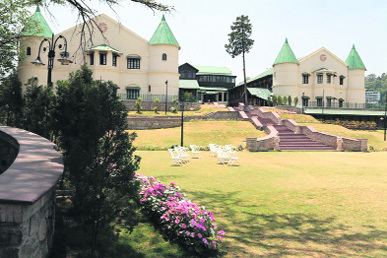
After World War I, the first car came to the hill station in 1920, and the hotel entered its most popular phase, as it boasted a large imperial dining room and the ballroom which was the talk of the town in its hey day. Maharajas and chieftains from the plains below stayed here and several maintained suites here, wealthy princes occupied entire wings with their retinues, as did various Kings of Nepal, Haile Selassie, Emperor of Ethiopia, the Crown Prince of Laos, and Nobel Prize winner Pearl S. Buck. The first-floor of the Public Library nearby, served as the Savoy Restaurant for many years. The Savoy orchestra played each night at the ballroom, filled with couples doing fox-trot, the latest dancing craze in those days. Visiting Mussoorie in 1926, the famous traveller, Lowell Thomas, wrote, "There is a hotel in Mussoorie (Savoy), where they ring a bell just before dawn so that the pious may say their prayers and the impious get back to their own beds."
Over the years it has been visited by several dignitaries including Jawahar Lal Nehru, on several occasions, notably in May 1920, when he stayed here with his ailing mother, wife and his infant daughter, Indira; incidentally Afghan envoys who were negotiating a peace deal with the British at the time, after the recent war were also staying at the hotel. Later as Prime Minister of India in 1959, he addressed the Travel Agents Association of India, at the hotel. After independence, the Dalai Lama gave a public audience every Thursday, at the hotel during his temporary residence at Mussoorie following his exile from Tibet, in 1959.
At one point it was run by the Italian hoteliers, Messrs Viglietta and Palazzi, who also ran the Carlton at Lucknow, and later leased the Majestic Hotel in Bombay. After that it changed hands many time, first taken over by Kripa Ram Jauhar in 1946, followed by his son Anand Kumar Jauhar in the 1960s, it changed hands again in 2005 when it went to R P Singh, a Kanpur-based industrialist. In July 2009, it was acquired by India's second largest hotel chain, ITC Welcomgroup Hotels, Palaces and Resorts’s wholly owned subsidiary Fortune Hotels from Hotels Control Pvt Ltd, its previous owners. Presently the hotel is under restoration, by the famed Interior Designer Sarbjit Singh of Fab Interiors and 50 rooms are expected to be operational by the end of 2010, along with the Writer's Bar, a restaurant and banqueting facilities.
In April 2001, the hotel hosted its first writer's retreat, followed by another one in 2002, which included writers, academics, film-makers and people from other walks of life.
Transport
Savoy Hotel is around 32 km from the nearest railhead, Dehradun Railway Station and 55 km from Jolly Grant Airport. Mussoorie Bus Station is the nearest bus terminal.
In popular culture
In 1911, a Miss Frances Garnett-Orme, a 49-year-old spiritualist, came to stay with her companion from Lucknow, Miss Eva Mountstephen, also a spiritualist who specialised in seances and crystal-gazing. One morning after Miss Mountstephen had returned to Lucknow, Miss Frances was found mysteriously dead, an autopsy revealed that she’d been poisoned with prussic acid, a cyanide-based poison. The murder was never solved and her doctor was also found dead a few months later, of strychnine poisoning. Miss Mounstephen was later arrested for allegedly tampering with her friend’s bottle of sodium bicarbonate by adding prussic acid to it, though the court found her not guilty. The case later inspired two works, Agatha Christie's first novel, The Mysterious Affair at Styles (1920) and also writer Ruskin Bond's In A Crystal Ball — A Mussoorie Mystery.
Apparently, Rudyard Kipling had written to Arthur Conan Doyle, urging him to write a story about a “murder by suggestion”. Though Conan Doyle never visited to investigate, he mentioned it to Agatha Christie and the detective story The Mysterious Affair at Styles was the result.
